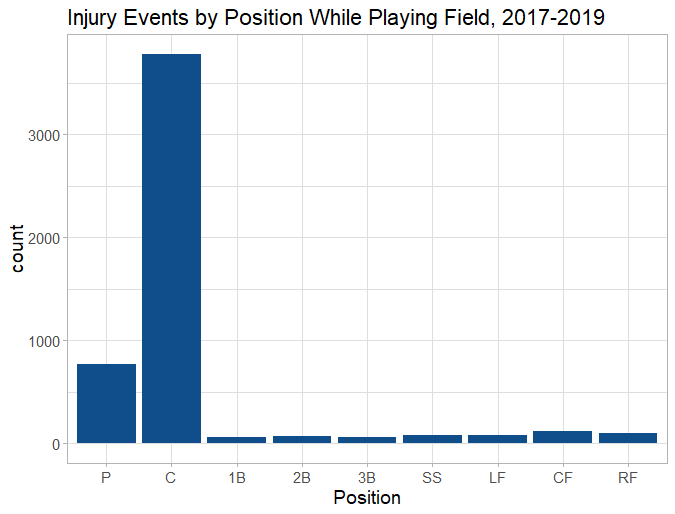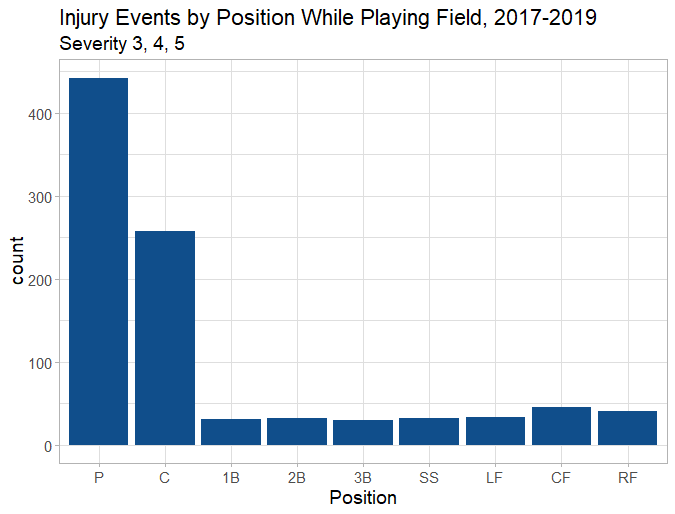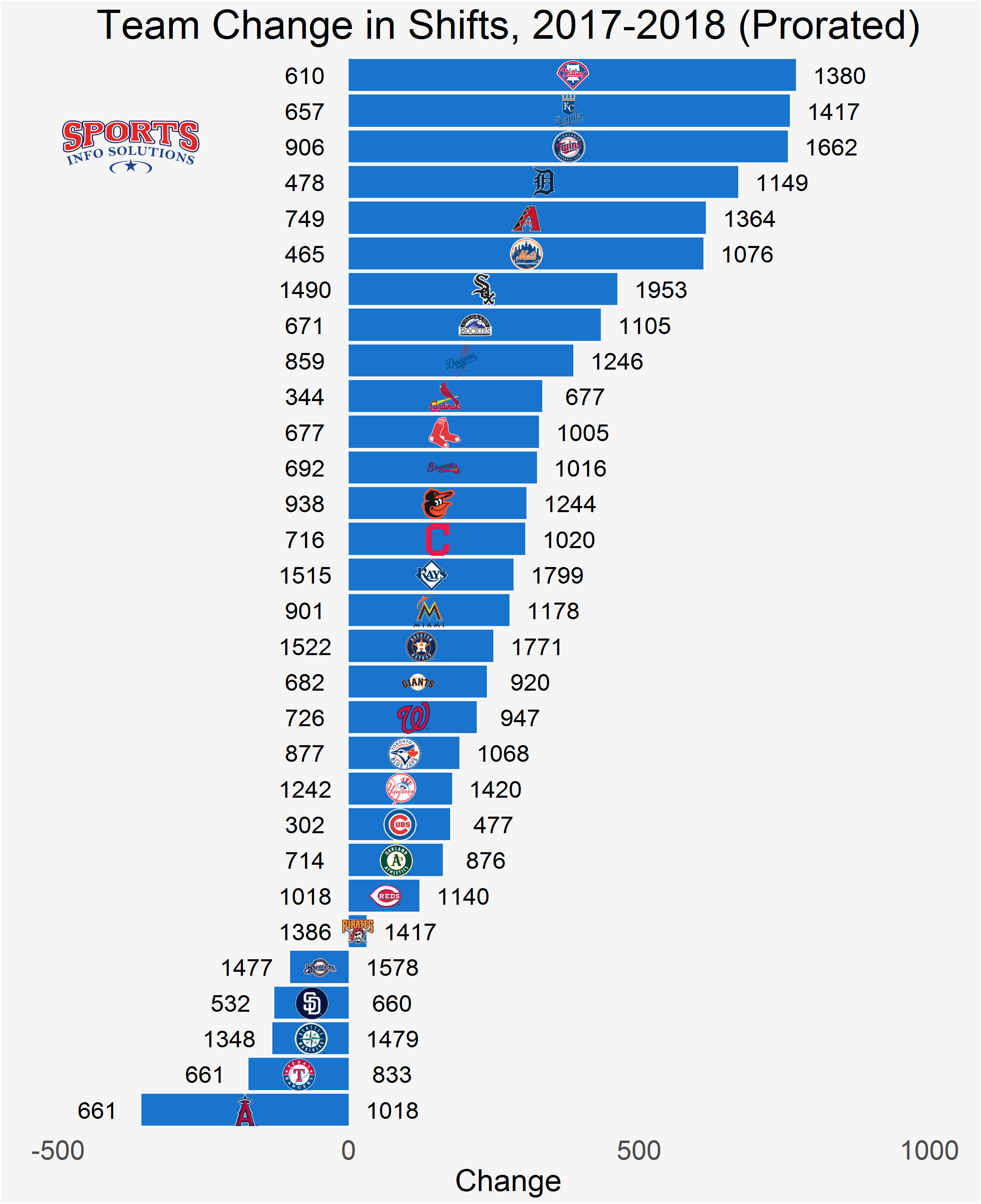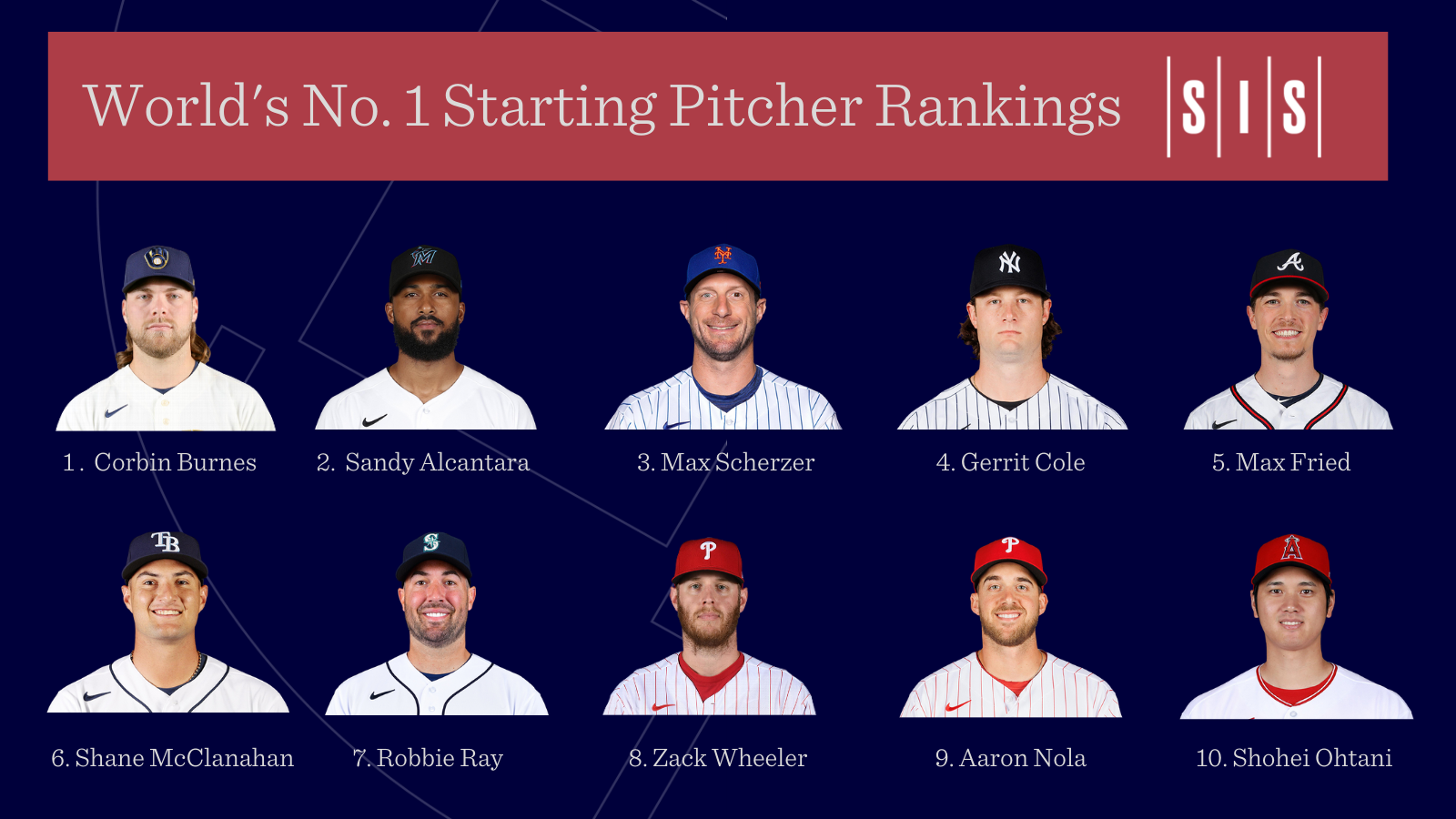In April, ESPN published an excellent feature on Farhan Zaidi and his path to becoming the Giants’ President of Baseball Operations. One story details how Zaidi, while in the doctorate program at UC Berkeley, studied irrational decision-making and the human tendency to “overweight low-probability events and underweight high-probability events.” The article explains:
“…in baseball, Zaidi’s favorite small-probability event is the industry-wide reluctance to use the backup catcher. ‘Oh, what if he gets hurt? Then we don’t have a catcher and disaster will strike.’ … ‘The likelihood of the catcher getting hurt in the last two or three innings of a game is tiny. But when you’re making this decision, you’re not thinking, There’s a tiny chance. You’re thinking, There’s a chance.'”
It’s an interesting dilemma. Being forced to play a non-catcher behind the plate is suboptimal, but should managers fear that scenario?
Baseball Info Solutions has been tracking detailed injury information for a few seasons, so let’s take a look at some data on catcher injuries.
First, how often does a catcher sustain an injury that forces him to leave the game immediately? Since the start of 2017, there have been 12,870 instances of a player appearing in a game behind the plate. Of those players, only 53 left any of those games immediately because of an injury. That’s 0.4% — or as Zaidi calls it, a tiny chance.
All 53 of those players were the starting catcher in the game — so in this time frame, no player came off the bench, appeared behind the plate, and had to leave immediately due to injury.
Though those extreme injuries are rare, playing behind the dish does include more injury risk overall relative to other positions. Looking at injuries that occurred while playing the field, catchers come out way ahead of the pack in terms of total injury events.

This is a little deceiving. We try to be as comprehensive as possible with our injury data collection and track even the slightest incidents on the field (like hit by pitches or foul balls off the body that may not incur much of a reaction). So a lot of those catcher injuries are low-risk.
But our Video Scouts also provide a severity rating of each injury on a scale of 1 to 5. Ratings 1 and 2 are injuries with no or slight visible reactions, while 3 and up include clearly visible reactions and are more severe. To focus on higher-risk injury events, here’s the positional breakdown of injuries with a severity of 3 or higher:

Pitchers surpass catchers in terms of severe injury events, but catchers are still at far more risk than other positions in the field. The more significant takeaway is that out of over 5,000 games played since the beginning of 2017, there have only been about 250 injury events to catchers (while on defense) that warranted a severity 3 rating or higher.
The most common of our charted injury events to catchers fall under the category of being struck by a ball or bat. Recently, Roberto Perez of the Indians and Francisco Cervelli of the Pirates have suffered concussions on such events. Given the catcher’s exposure to foul tips and backswings, they’re certainly at more risk than someone in the infield or outfield.
But overall, the chance of an extremely severe injury is rare. Perhaps more managers should be willing to use the backup catcher if the situation warrants it, even if it presents the low-probability risk of needing an emergency catcher to step in.


